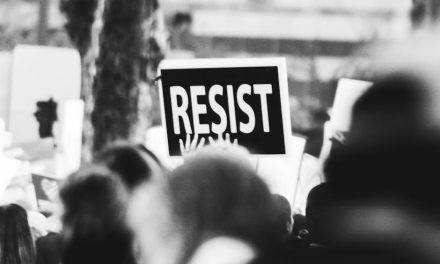Table of Contents
- Introduction
- The Importance of Continuously Evaluating and Updating DEI Strategies
- Strategies for Maintaining a Diverse and Inclusive Workforce During Organizational Change
- Overcoming Challenges in Sustaining DEI Efforts Amid Organizational Change
- Promoting Accountability and Transparency in DEI Initiatives During Organizational Change
- Q&A
- Conclusion
“Embracing Change, Empowering All: Sustaining Diversity, Equity, and Inclusion”
Introduction
Sustaining Diversity, Equity, and Inclusion (DEI) efforts amid organizational change is crucial for fostering an inclusive and equitable work environment. As organizations evolve and undergo transformations, it is essential to ensure that DEI initiatives remain a priority. This introduction will explore the importance of sustaining DEI efforts during organizational change and highlight strategies to achieve this goal.
The Importance of Continuously Evaluating and Updating DEI Strategies

Sustaining Diversity, Equity, and Inclusion (DEI) efforts is crucial for organizations that aim to create an inclusive and equitable workplace. However, in a constantly evolving business landscape, organizations often undergo organizational changes that can impact their DEI strategies. To ensure the effectiveness and relevance of these strategies, it is essential to continuously evaluate and update them.
One of the primary reasons for evaluating and updating DEI strategies is the changing demographics of the workforce. As society becomes more diverse, organizations must adapt to the evolving needs and expectations of their employees. By regularly assessing the demographics of their workforce, organizations can identify any gaps in representation and take proactive steps to address them. This may involve revisiting recruitment and hiring practices, implementing targeted training programs, or creating affinity groups to support underrepresented employees.
Another important aspect of evaluating DEI strategies is assessing the impact of organizational changes. Mergers, acquisitions, or restructuring can significantly alter the dynamics within an organization. These changes may affect the distribution of power, decision-making processes, and overall culture. By conducting regular assessments, organizations can identify any unintended consequences of these changes on DEI efforts. This allows them to make necessary adjustments and ensure that diversity, equity, and inclusion remain a priority throughout the transition.
Furthermore, evaluating DEI strategies helps organizations stay aligned with their goals and objectives. As business priorities shift, it is essential to reassess whether the existing strategies are still relevant and effective. For example, if an organization expands its operations globally, it may need to consider how to promote diversity and inclusion in different cultural contexts. By regularly evaluating their strategies, organizations can identify any gaps or areas for improvement and make the necessary adjustments to ensure their DEI efforts remain aligned with their overall business objectives.
In addition to evaluating DEI strategies, organizations must also update them to keep pace with societal changes. Social and cultural norms are constantly evolving, and organizations must adapt to these changes to remain inclusive and equitable. For instance, the #MeToo movement has brought increased attention to issues of sexual harassment and gender equality in the workplace. Organizations must respond to these societal shifts by updating their policies, providing training on respectful workplace behavior, and fostering a culture of accountability.
Moreover, updating DEI strategies can help organizations leverage new technologies and best practices. Technology has the potential to both facilitate and hinder diversity and inclusion efforts. For example, artificial intelligence (AI) algorithms used in recruitment processes may inadvertently perpetuate biases if not carefully designed and monitored. By staying informed about emerging technologies and best practices, organizations can ensure that their DEI strategies leverage the latest tools and techniques to promote fairness and inclusivity.
In conclusion, sustaining DEI efforts amid organizational change requires continuous evaluation and updating of strategies. By regularly assessing the demographics of the workforce, evaluating the impact of organizational changes, staying aligned with business goals, adapting to societal changes, and leveraging new technologies, organizations can ensure that their DEI efforts remain effective and relevant. This commitment to diversity, equity, and inclusion not only fosters a more inclusive workplace but also contributes to the overall success and sustainability of the organization.
Strategies for Maintaining a Diverse and Inclusive Workforce During Organizational Change
Sustaining Diversity, Equity, and Inclusion Efforts Amid Organizational Change
Strategies for Maintaining a Diverse and Inclusive Workforce During Organizational Change
Organizational change is a constant in today’s fast-paced business environment. Companies are constantly evolving, adapting to new market trends, and seeking ways to remain competitive. However, amidst these changes, it is crucial for organizations to sustain their diversity, equity, and inclusion (DEI) efforts. Maintaining a diverse and inclusive workforce during times of organizational change requires careful planning and implementation of strategies that prioritize DEI.
One of the key strategies for sustaining DEI efforts during organizational change is to ensure that diversity and inclusion are embedded in the company’s core values and culture. This means that DEI should not be treated as an afterthought or a separate initiative, but rather as an integral part of the organization’s DNA. By making DEI a fundamental aspect of the company’s values, employees will understand its importance and be more likely to embrace and support it, even during times of change.
Another important strategy is to provide ongoing training and education on DEI topics. This includes not only initial training for new employees but also continuous learning opportunities for existing staff. By investing in DEI training, organizations can ensure that employees have the knowledge and skills to foster an inclusive work environment, regardless of the changes happening around them. This training should cover topics such as unconscious bias, cultural competence, and inclusive leadership, among others.
Communication is also crucial in sustaining DEI efforts during organizational change. Open and transparent communication helps to build trust and ensures that employees feel heard and valued. During times of change, it is important for leaders to communicate the organization’s commitment to DEI and provide updates on any changes or initiatives related to diversity and inclusion. This can be done through regular town hall meetings, newsletters, or other internal communication channels.
In addition to communication, it is essential to involve employees in the decision-making process. This can be done through employee resource groups, diversity councils, or other forums where employees can provide input and feedback on DEI initiatives. By involving employees in the decision-making process, organizations can ensure that their diverse perspectives are taken into account and that DEI efforts are aligned with their needs and expectations.
Furthermore, organizations should regularly assess and evaluate their DEI efforts to ensure that they are effective and impactful. This includes collecting and analyzing data on diversity metrics, such as representation at different levels of the organization, as well as employee engagement and satisfaction surveys. By regularly reviewing these metrics, organizations can identify areas for improvement and make data-driven decisions to sustain and enhance their DEI efforts.
Finally, it is important for organizations to hold leaders accountable for DEI. Leaders play a critical role in shaping the culture and values of an organization, and their actions and behaviors have a significant impact on DEI efforts. Organizations should establish clear expectations for leaders regarding their commitment to DEI and hold them accountable for creating and maintaining an inclusive work environment. This can be done through performance evaluations, leadership development programs, and recognition and rewards systems that prioritize DEI.
In conclusion, sustaining diversity, equity, and inclusion efforts amid organizational change requires a strategic and intentional approach. By embedding DEI in the company’s core values, providing ongoing training and education, communicating openly and transparently, involving employees in decision-making, regularly assessing and evaluating DEI efforts, and holding leaders accountable, organizations can maintain a diverse and inclusive workforce even during times of change. These strategies will not only help organizations navigate the challenges of organizational change but also contribute to their long-term success and competitiveness in an increasingly diverse and globalized business environment.
Overcoming Challenges in Sustaining DEI Efforts Amid Organizational Change
Sustaining Diversity, Equity, and Inclusion Efforts Amid Organizational Change
Overcoming Challenges in Sustaining DEI Efforts Amid Organizational Change
Organizational change is a constant in today’s fast-paced business environment. Companies are constantly evolving, adapting to new market trends, and seeking ways to stay competitive. However, amidst these changes, it is crucial for organizations to sustain their diversity, equity, and inclusion (DEI) efforts. DEI is not just a buzzword; it is a fundamental aspect of building a successful and inclusive workplace culture. In this article, we will explore the challenges that organizations face in sustaining DEI efforts amid organizational change and discuss strategies to overcome them.
One of the main challenges in sustaining DEI efforts during organizational change is the lack of leadership commitment. When organizations undergo significant changes, such as mergers, acquisitions, or restructuring, leaders often prioritize other aspects of the business, such as financial performance or operational efficiency. As a result, DEI initiatives may take a backseat, leading to a decline in diversity and inclusion efforts. To overcome this challenge, it is crucial for leaders to demonstrate their commitment to DEI by integrating it into the organization’s strategic goals and holding themselves accountable for its success.
Another challenge is the resistance to change from employees. Change can be unsettling for employees, especially when it comes to DEI efforts. Some employees may resist diversity initiatives due to fear of losing their privileges or feeling threatened by the inclusion of underrepresented groups. To address this challenge, organizations need to invest in comprehensive change management strategies that include clear communication, training, and education. By providing employees with the necessary tools and resources to understand the importance of DEI, organizations can foster a culture of acceptance and inclusivity.
Additionally, sustaining DEI efforts amid organizational change requires ongoing measurement and evaluation. Many organizations implement DEI initiatives without establishing clear metrics or benchmarks to track progress. As a result, these efforts may lose momentum over time. To overcome this challenge, organizations should establish key performance indicators (KPIs) and regularly assess their progress towards achieving diversity and inclusion goals. By measuring the impact of DEI initiatives, organizations can identify areas for improvement and make data-driven decisions to sustain their efforts.
Furthermore, organizational change often brings about shifts in power dynamics and hierarchies. This can create challenges in sustaining DEI efforts, as individuals in positions of power may resist relinquishing their privilege or sharing decision-making authority. To address this challenge, organizations need to foster a culture of inclusivity and empower employees at all levels to contribute to DEI efforts. This can be achieved through leadership development programs, mentorship opportunities, and creating platforms for diverse voices to be heard.
Lastly, sustaining DEI efforts requires continuous learning and adaptation. Organizational change is not a one-time event; it is an ongoing process. As such, organizations need to be agile and responsive to the evolving needs of their workforce. This includes regularly reviewing and updating DEI policies and practices, seeking feedback from employees, and staying informed about best practices in the field. By embracing a growth mindset and being open to change, organizations can sustain their DEI efforts and create a workplace culture that celebrates diversity and inclusion.
In conclusion, sustaining diversity, equity, and inclusion efforts amid organizational change is a complex but essential task. By addressing challenges such as leadership commitment, employee resistance, measurement and evaluation, power dynamics, and continuous learning, organizations can overcome these obstacles and create a workplace culture that values diversity and inclusion. DEI is not just a goal to be achieved; it is an ongoing journey that requires dedication, perseverance, and a commitment to creating a better and more inclusive future.
Promoting Accountability and Transparency in DEI Initiatives During Organizational Change
Sustaining Diversity, Equity, and Inclusion Efforts Amid Organizational Change
Promoting Accountability and Transparency in DEI Initiatives During Organizational Change
Organizational change is a constant in today’s fast-paced business environment. Companies are constantly evolving, adapting to new market trends, and seeking ways to improve their operations. However, amidst these changes, it is crucial for organizations to sustain their diversity, equity, and inclusion (DEI) efforts. Promoting accountability and transparency in DEI initiatives during organizational change is essential to ensure that these efforts remain a priority and continue to drive positive change within the company.
One of the key ways to promote accountability and transparency in DEI initiatives is by setting clear goals and objectives. During times of organizational change, it is easy for DEI efforts to take a backseat as companies focus on other pressing matters. By establishing specific, measurable, attainable, relevant, and time-bound (SMART) goals for DEI, organizations can ensure that these initiatives remain at the forefront of their agenda. These goals should be communicated to all employees, creating a sense of accountability and ownership among the workforce.
In addition to setting goals, organizations must also establish metrics to track progress and measure the effectiveness of their DEI initiatives. By collecting and analyzing data related to diversity, equity, and inclusion, companies can identify areas of improvement and make data-driven decisions. This data should be shared transparently with employees, stakeholders, and the public to demonstrate the organization’s commitment to DEI and hold themselves accountable for their progress.
Another crucial aspect of promoting accountability and transparency in DEI initiatives is fostering a culture of open communication. During times of organizational change, employees may feel uncertain or anxious about the future. It is essential for leaders to create a safe space where employees can voice their concerns, provide feedback, and share their experiences related to DEI. This open dialogue not only helps address any issues or challenges but also fosters a sense of trust and inclusivity within the organization.
Furthermore, organizations should consider establishing employee resource groups (ERGs) or affinity groups to support and empower underrepresented employees. These groups provide a platform for employees to connect, share experiences, and collaborate on DEI initiatives. By actively involving employees in these groups, organizations can ensure that their voices are heard and that they play an active role in shaping the company’s DEI efforts.
Promoting accountability and transparency in DEI initiatives also requires leaders to lead by example. Executives and managers should actively participate in DEI training programs, workshops, and events. By demonstrating their commitment to DEI, leaders set the tone for the entire organization and inspire employees to embrace diversity and inclusion. Additionally, leaders should hold themselves accountable for their actions and decisions, ensuring that they align with the organization’s DEI values.
Lastly, organizations should regularly assess and evaluate their DEI initiatives to identify areas for improvement. This can be done through employee surveys, focus groups, or external audits. By seeking feedback from employees and stakeholders, organizations can gain valuable insights into the effectiveness of their DEI efforts and make necessary adjustments. This ongoing evaluation process demonstrates the organization’s commitment to continuous improvement and ensures that DEI remains a priority even during times of change.
In conclusion, sustaining diversity, equity, and inclusion efforts amid organizational change requires promoting accountability and transparency. By setting clear goals, establishing metrics, fostering open communication, involving employees through ERGs, leading by example, and regularly evaluating initiatives, organizations can ensure that their DEI efforts remain a priority. These actions not only drive positive change within the company but also contribute to a more inclusive and equitable work environment.
Q&A
1. How can organizations sustain diversity, equity, and inclusion efforts amid organizational change?
Organizations can sustain diversity, equity, and inclusion efforts by embedding them into their core values, policies, and practices, providing ongoing training and education, fostering inclusive leadership, and regularly measuring and evaluating progress.
2. Why is it important to sustain diversity, equity, and inclusion efforts during organizational change?
Sustaining diversity, equity, and inclusion efforts during organizational change ensures that these values remain a priority and are not compromised. It helps maintain a diverse and inclusive workforce, enhances employee engagement and productivity, and promotes a positive organizational culture.
3. What challenges might organizations face in sustaining diversity, equity, and inclusion efforts during organizational change?
Organizations may face challenges such as resistance to change, lack of leadership commitment, limited resources, and competing priorities. Additionally, maintaining diversity, equity, and inclusion efforts during times of uncertainty and restructuring can be particularly challenging.
4. What strategies can organizations employ to overcome challenges and sustain diversity, equity, and inclusion efforts during organizational change?
Organizations can overcome challenges by clearly communicating the importance of diversity, equity, and inclusion, involving employees in the change process, providing resources and support for training and development, holding leaders accountable for fostering an inclusive environment, and regularly assessing and addressing barriers to progress.
Conclusion
In conclusion, sustaining diversity, equity, and inclusion efforts amid organizational change is crucial for fostering an inclusive and equitable work environment. It requires ongoing commitment, clear communication, and proactive measures to ensure that diversity and inclusion initiatives are not compromised during times of change. By prioritizing diversity, equity, and inclusion, organizations can create a more inclusive culture that benefits both employees and the overall success of the organization.




